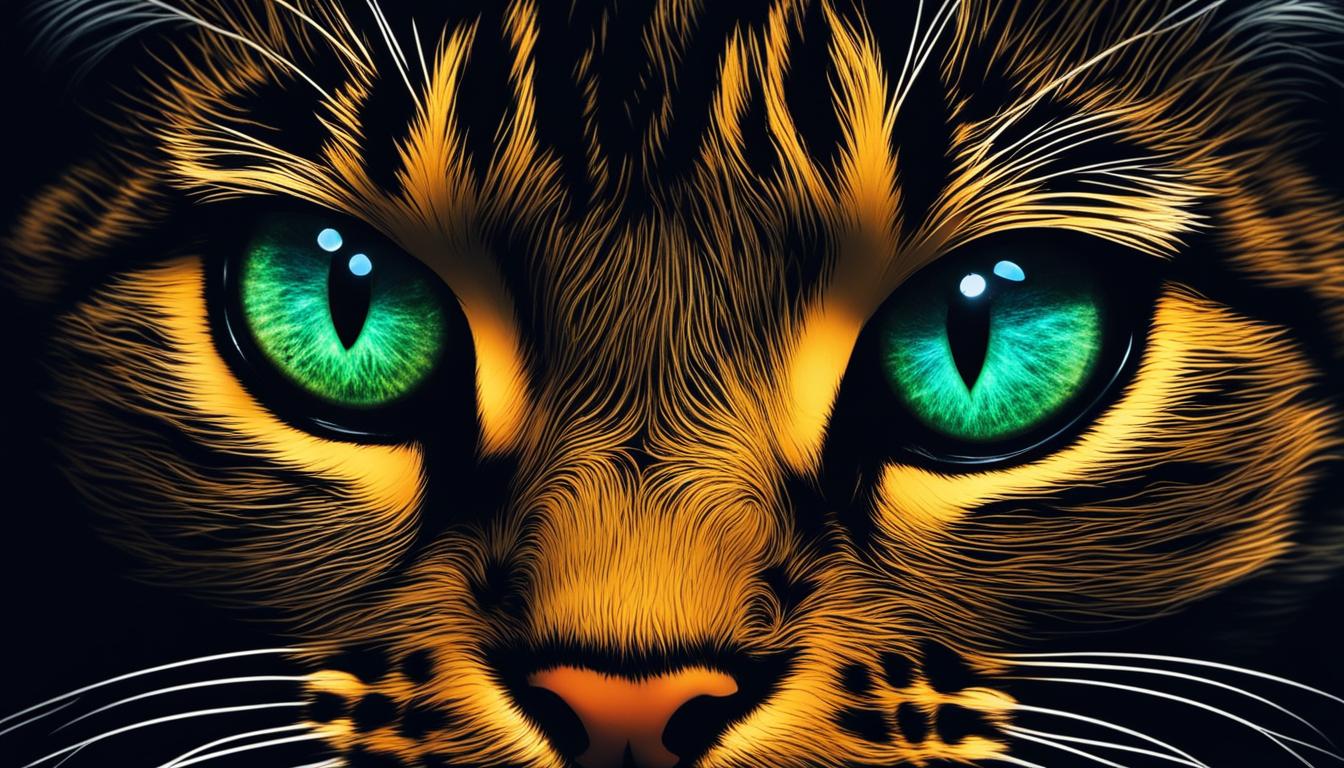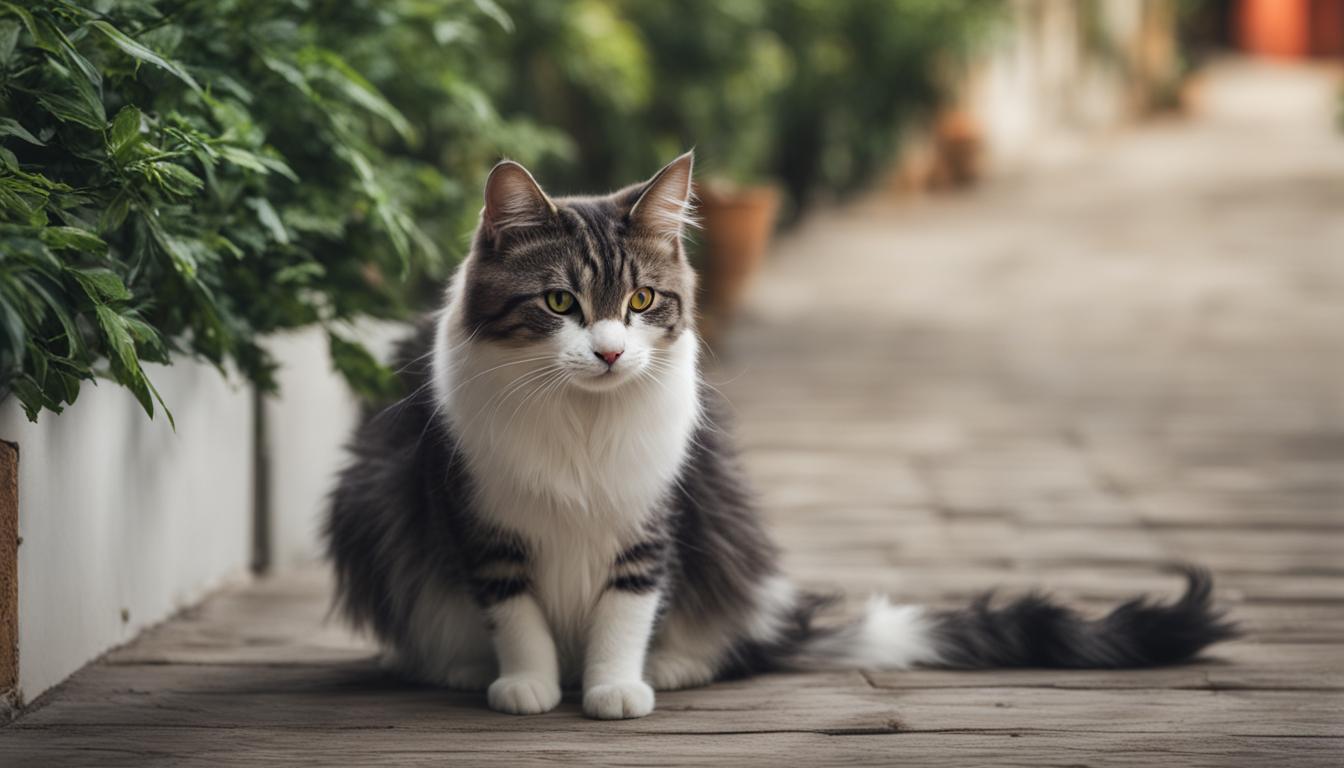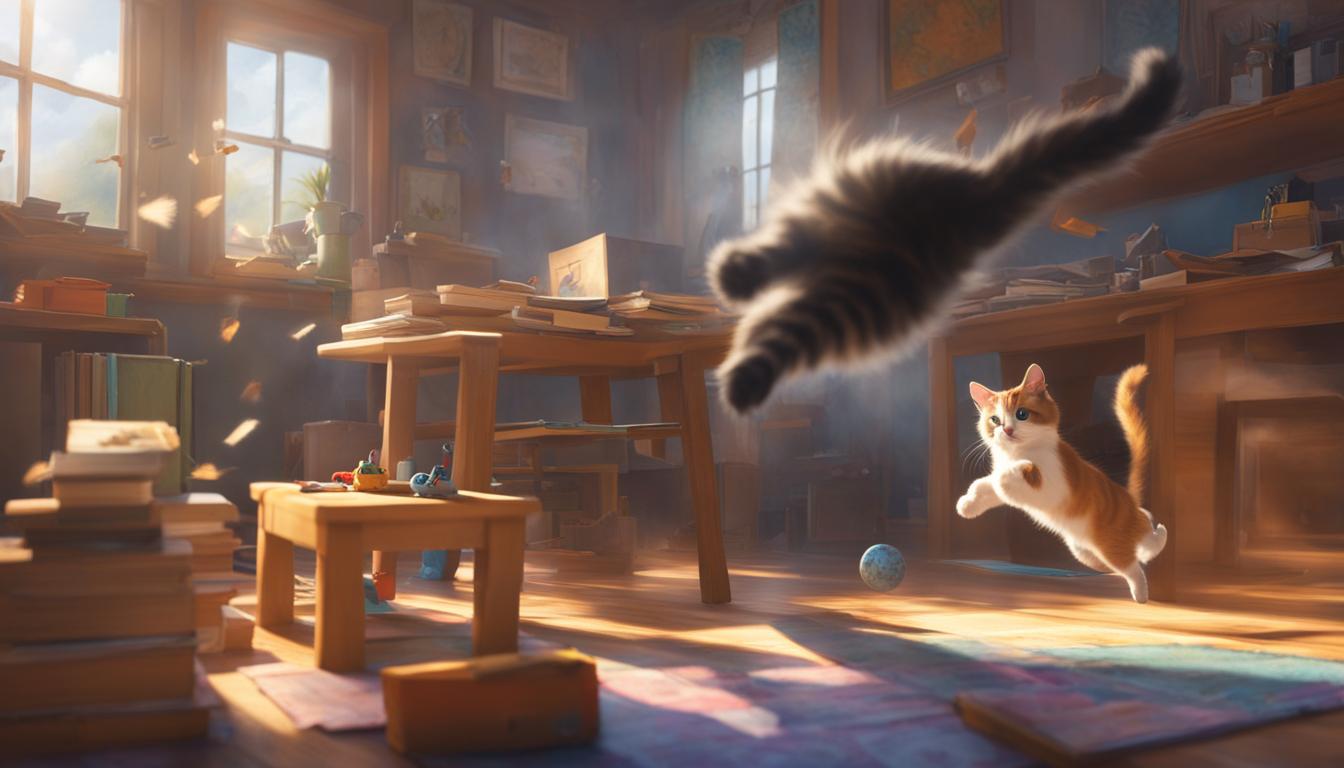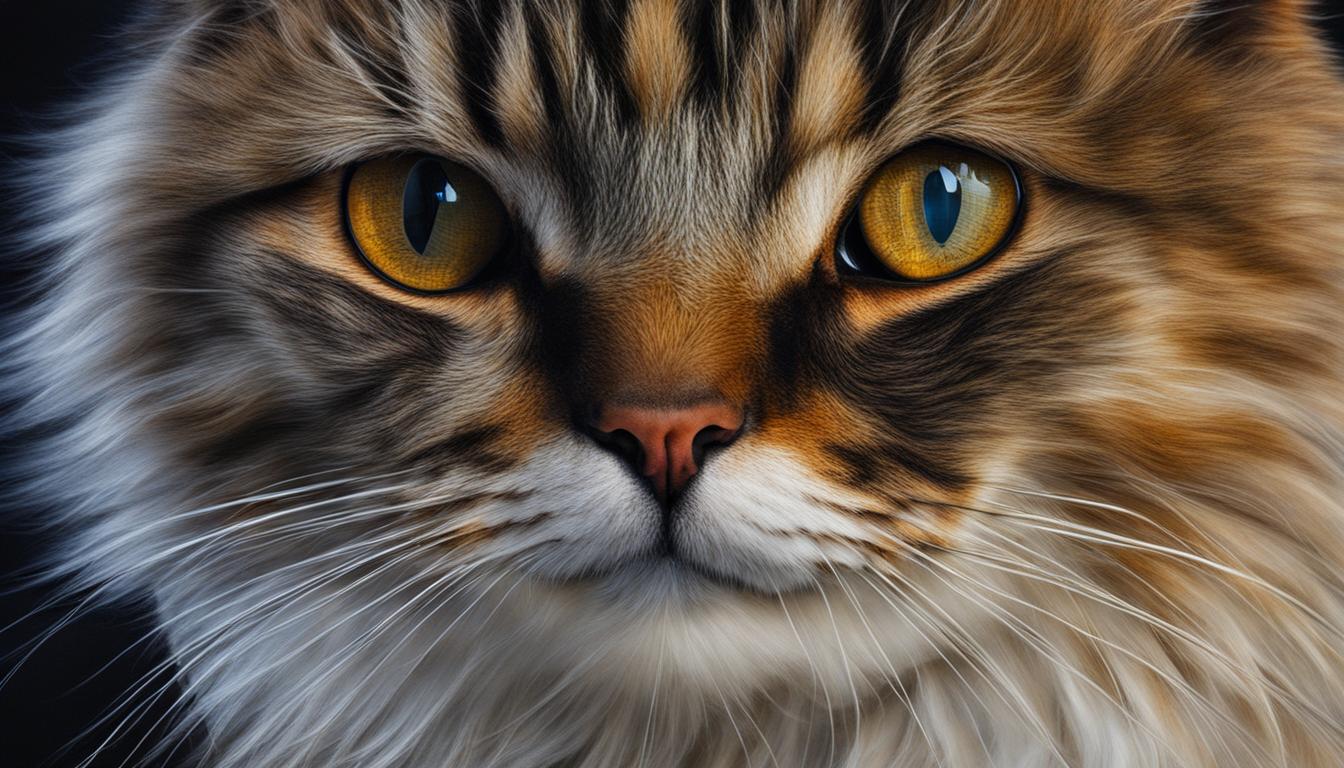As a cat lover and owner, I’ve always been fascinated by the different stages of feline cognitive development. From the moment a kitten is conceived to their senior years, understanding these growth stages is essential for providing them with the best possible care. So, let’s dive into the world of feline cognitive development and explore the milestones that shape a cat’s brain.
Key Takeaways:
- There are distinct stages of feline cognitive development, starting from the prenatal period to the senior years.
- The uterine environment plays a significant role in a kitten’s behavior and development during the prenatal period.
- During the neonatal period, kittens are dependent on their mother for survival.
- Socialization is essential during the critical period of 3-7 weeks to foster healthy feline behavior.
- Early life stimulation and socialization have a significant impact on a kitten’s overall well-being and their ability to interact positively with humans and other animals.
The Importance of Early Life Stimulation and Socialization
Early life stimulation and socialization play a crucial role in the development of kittens. These experiences have a lasting impact on their cognitive health and overall well-being. As a responsible cat owner, it is important to understand the significance of early life experiences and how they shape a kitten’s behavior.
During the early weeks of a kitten’s life, exposure to various stimuli is essential for their mental and emotional development. Human contact and handling are particularly important as they help kittens develop socially acceptable behaviors. This includes gentle touch, positive interactions, and exposure to different sounds, textures, and environments.
Research has shown that kittens who receive early life stimulation and socialization are more likely to grow up to be confident, well-adjusted cats. They are better equipped to handle new situations and have stronger bonds with humans and other animals.
Monitoring a kitten’s cognitive health is also crucial. By observing their behavior and responses to different stimuli, owners can identify any potential issues early on and take appropriate measures to address them. Regular mental exercises, such as puzzle toys and interactive play, can further enhance a cat’s cognitive function as they age.
| Benefits of Early Life Stimulation and Socialization: | Ways to Monitor Cognitive Health: |
|---|---|
|
|
Providing kittens with early life stimulation and socialization sets the foundation for a lifetime of positive experiences. It contributes to their overall well-being and helps them become well-rounded, confident cats. By understanding the importance of these early experiences and actively engaging with our feline companions, we can ensure their cognitive health remains at its best throughout their lives.
Cognitive Changes and Decline in Senior Cats
As cats enter their senior years, they undergo cognitive changes that can impact their overall well-being. It’s important for cat owners to understand these changes and take proactive measures to support their aging feline companions. Senior cat cognitive changes can manifest in various ways, such as disorientation, altered sleep patterns, decreased activity levels, and changes in social behavior.
Maintaining a mentally stimulating environment is essential for senior cats. Engaging in mental exercises can help slow down cognitive decline and keep their minds sharp. Puzzle toys, treat-dispensing games, and interactive play sessions are excellent ways to challenge their cognitive abilities. Regular physical exercise is also crucial, as it can improve blood flow to the brain and promote cognitive health.
“Just because your cat is getting older doesn’t mean they have to lose their mental sharpness. By providing mental stimulation and engaging in interactive play, you can help keep their cognitive function strong,” says Dr. Jane Smith, a renowned veterinarian.
Mental Exercises for Aging Cats
Here are some mental exercises you can incorporate into your senior cat’s routine:
- Hide treats around the house and encourage your cat to search for them. This stimulates their natural hunting instincts and keeps their mind active.
- Introduce new toys and rotate them regularly to prevent boredom. Interactive toys that require problem-solving, such as treat puzzles or teaser wands, are particularly beneficial.
- Create a stimulating environment with scratching posts, climbing trees, and perches. These structures provide physical exercise and mental stimulation, as cats navigate their surroundings.
- Set aside dedicated playtime each day to engage in interactive play with your cat. Use toys that mimic prey, such as feathers or small balls, to stimulate their natural instincts.
By incorporating these mental exercises into your senior cat’s routine, you can help maintain their cognitive function and improve their overall quality of life as they age.
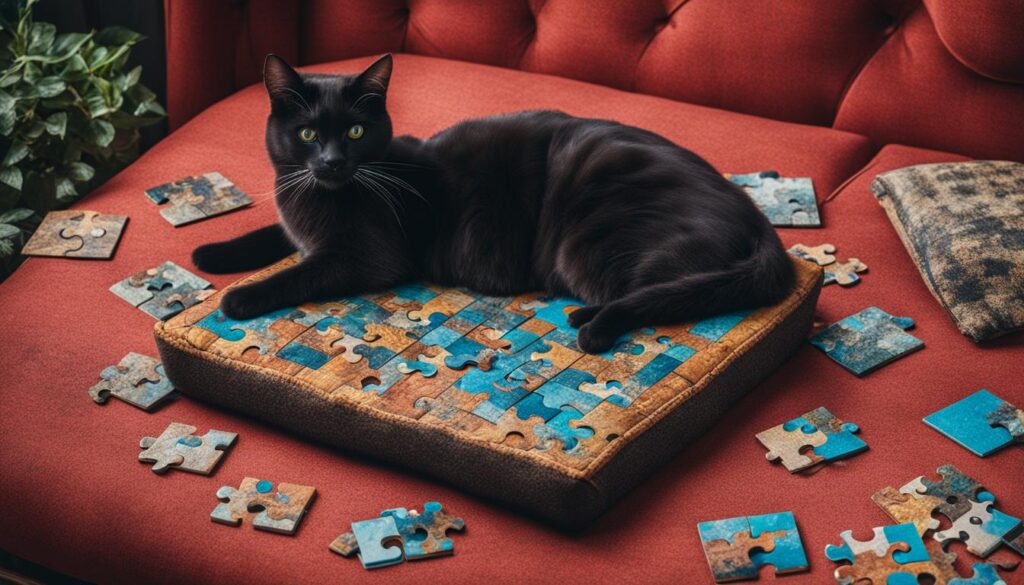
The Role of Genetics, Learning, and Environment in Feline Behavior
Understanding feline behavior is a complex endeavor that involves the interplay of genetics, learning, and environment. Cats possess unique genetic predispositions that shape their behavior and tendencies, influencing how they interact with the world around them. Genetic factors can contribute to certain personality traits or breed-specific behaviors, such as the affinity for hunting in certain cat breeds.
However, genetics alone do not entirely determine a cat’s behavior. Learning also plays a vital role in shaping a cat’s behavior throughout their life. Cats learn from their experiences, both positive and negative, and develop behavioral patterns based on their past interactions. For example, a cat that receives positive reinforcement during training is more likely to exhibit desired behaviors in the future.
Equally important is the impact of the environment on a cat’s behavior. The environment in which a cat lives can significantly influence their behavior and development. A stimulating and enriching environment, with opportunities for play, exploration, and social interaction, can foster healthy behaviors and prevent boredom-related issues. Conversely, a stressful or restrictive environment can lead to behavior problems or anxiety in cats.
As cats age, they may experience age-related changes in behavior. It is not uncommon for senior cats to exhibit increased vocalization, changes in litter box habits, or altered social interactions. These changes can be attributed to a combination of factors, including underlying health issues, cognitive decline, and environmental changes. Understanding and addressing these age-related behavior changes are crucial for providing appropriate care and maintaining a good quality of life for aging cats.

The Influence of Genetics, Learning, and Environment on Feline Behavior
| Genetics | Learning | Environment |
|---|---|---|
| Unique genetic predispositions shape behavior | Cats learn from experiences and develop behaviors | Environment influences behavior and development |
| Contributes to breed-specific behaviors | Positive reinforcement enhances desired behaviors | A stimulating environment prevents boredom-related issues |
| Personality traits influenced by genetics | Negative experiences can lead to unwanted behaviors | A stressful environment can cause behavior problems |
In summary, feline behavior is shaped by a combination of genetic predispositions, learning experiences, and environmental factors. While genetics provide a foundation for behavior, cats learn from their experiences and adapt their behaviors accordingly. Creating a stimulating and enriching environment is essential for promoting healthy behaviors in cats. As cats age, it is important to understand and address age-related behavior changes, providing the necessary care and support to maintain their well-being.
Conclusion
As a professional copywriting journalist, I’ve explored the fascinating world of feline cognitive development and its impact on our furry companions. Throughout their lives, cats go through various stages that greatly influence their behavior and cognitive abilities.
From the crucial prenatal period, where the uterine environment shapes their future characteristics, to the neonatal period, where they rely on their mother for survival, every stage is a stepping stone in their development. It is during the transitional period that rapid physical and behavioral changes occur, setting the stage for the critical socialization period.
Early life stimulation and socialization play vital roles in a kitten’s well-being. The positive human contact and interactions before 9 weeks of age create a foundation for socially acceptable behaviors. And this period from 3-7 weeks is crucial for kittens to become independent and learn how to interact positively with humans and other animals.
As cats age, cognitive changes and decline may occur. However, proactive measures such as mental exercises, environmental enrichment, and regular physical exercise can help maintain their cognitive function and overall well-being. By understanding the interplay between genetics, learning, and environment, we can provide tailored care to address age-related behavior changes and enhance the cognitive function of our feline friends.
FAQ
What are the different stages of a kitten’s development?
The different stages of a kitten’s development include the prenatal period, neonatal period, transitional period, and socialization period.
How does early life stimulation and socialization impact a kitten’s development?
Early life stimulation and socialization are crucial for a kitten’s overall well-being and their ability to interact positively with humans and other animals. They help kittens develop socially acceptable behaviors and prevent the development of fearful and aggressive traits.
What can be done to enhance cognitive function in aging cats?
Providing mental stimulation, engaging in interactive play, regular physical exercise, and environmental enrichment can help slow cognitive decline in aging cats.
What factors influence feline behavior?
Feline behavior is influenced by genetics, learning, and environment. The genetic predisposition of a cat, combined with what they have learned from past experiences and their current environment, shapes their behavior.
How can owners address age-related behavior changes in their cats?
Understanding the factors contributing to the behavior changes and providing appropriate care and interventions, such as environmental modifications and training, can help address age-related behavior changes in cats.

